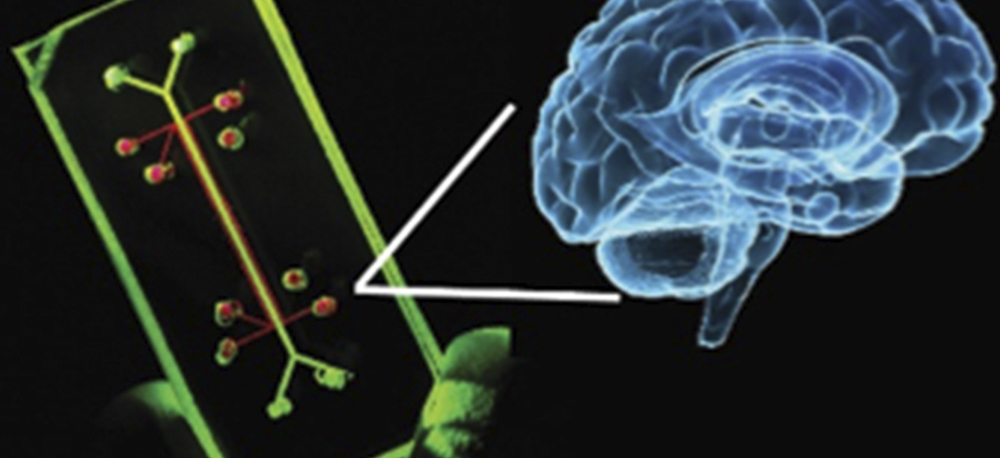Organ-on-a-Chip and Cell Models
Microphysiological systems, also known as organ-on-a-chip, combine advances in microfluidics with biomimetic cell culture to emulate human organs or organ systems. They typically consist of two or more microfluidic compartments – allowing for application of biochemical and biophysical cues – each hosting a specific type or mix of cells, separated by permeable barriers to facilitate cellular communication.

We are developing a new generation of microphysiological systems for the study of the neuro vascular unit (NVU) and other organs which incorporate three key advances:
- Integrated sensors to directly monitor cellular health, function, and communication inside the system with unprecedented temporal resolution, shedding light on metabolic interactions as well as pharmacodynamics and -kinetics
- Microfluidics made out of biocompatible and easy-to-fabricate materials to overcome limitations such as drug absorption and materials integration posed by the prevalent PDMS
- Human iPS-derived cells to better approximate human-normal phenotypes compared to animal cells or cell lines and to avoid the issues in population purity and ethics associated with primary cells
We furthermore study combinations of microsystems and cells (mammalian cells and bacteria) for therapeutic and diagnostic purposes.
Involved faculty
Faculty working within the research topic organ-on-a-chip and cell models.
